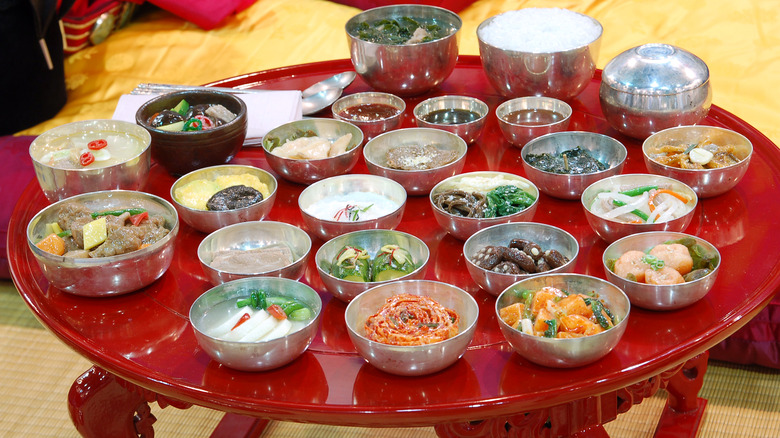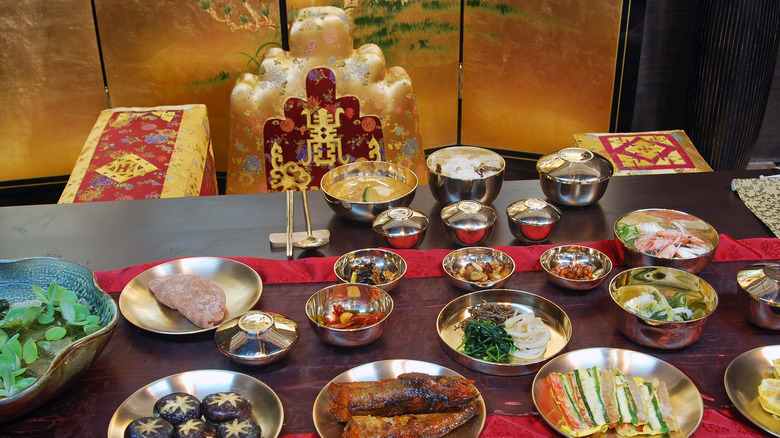What Meals Were Like For The King During Korea's Joseon Dynasty
The Korean Peninsula has an incredibly long history of human habitation and, naturally, dining to match. As far back as 700,000 years ago, early humans moved in, per Korean Culture. Back then, people were hunter-gatherers, eating flora and fauna. Just 10,000 years ago, folks there started farming cereal grains, such as millet. Over the next 9,000 years, Korean society took on various forms, including the famous Three Kingdoms, and the area's cuisine grew gradually more complex. By A.D. 1400, the Joseon Dynasty came to dominate the area, and hundreds of years of Joseon-led culture and cuisine came to pass.
What did Koreans eat during the Joseon Dynasty? According to Korea Post, commoners ate three meals a day. These consisted of bap (rice), guk (watery soup), jjigae (stew), kimchi (fermented veggies), and namul (seasonal greens), with almost every dish put in its bowl. During especially tough times, like right before harvest when the previous year's barley had run out, some peasants had to eat grass and bark. On the other hand, middle-class landlords and merchants usually could afford food all year round and even add more varied side dishes to their meals. This was especially true of the noble class, who often enjoyed their proximity to the fine dining of Joseon's king.
Food fit for kings
Being king had its benefits, and the best food in all the kingdom was one of them. Korea Post explains that the king ate five meals daily in what was called Surasang (Royal Table). The extra meal early in the morning was either medicinal herb, mieum (thin rice gruel), or juk (gruel). The additional late-night meal was milk gruel, sikhye (rice punch), and yaksik (glutinous rice). Breakfast, lunch, and dinner consisted of myriad items sourced from regions across the Korean peninsula, delicacies included. Unlike his subjects, the king enjoyed at least a dozen side dishes. Royal Table also had an elaborate setup with a handful of tables and a hotpot, and many palace servants worked on arranging this food.
That sort of luxury only increased around special occasions. Per Visit Korea, holidays like Chuseok (Korean Thanksgiving) or Dongji (winter solstice) spawned banquets with full-fledged feasts. Months of preparation went into setting up tables with decorative tteok (rice cake) and hangwa (sweet confections) for certain celebrations, yet, those foods were mostly for show. On his birthday, the king ate entrees like noodles or dumplings alongside side dishes like green-lentil jelly, pancakes, and sashimi (via Science Direct). Seasonings included honey, mustard, and red pepper paste. Fruits like lychee, nectarines, pomegranates, and drinks like hawthorn berry persimmon punch provided a refreshing element. Rice cakes and other sweet treats were abundant. Indeed, the Joseon Dynasty took "eating like royalty" to a different level.

